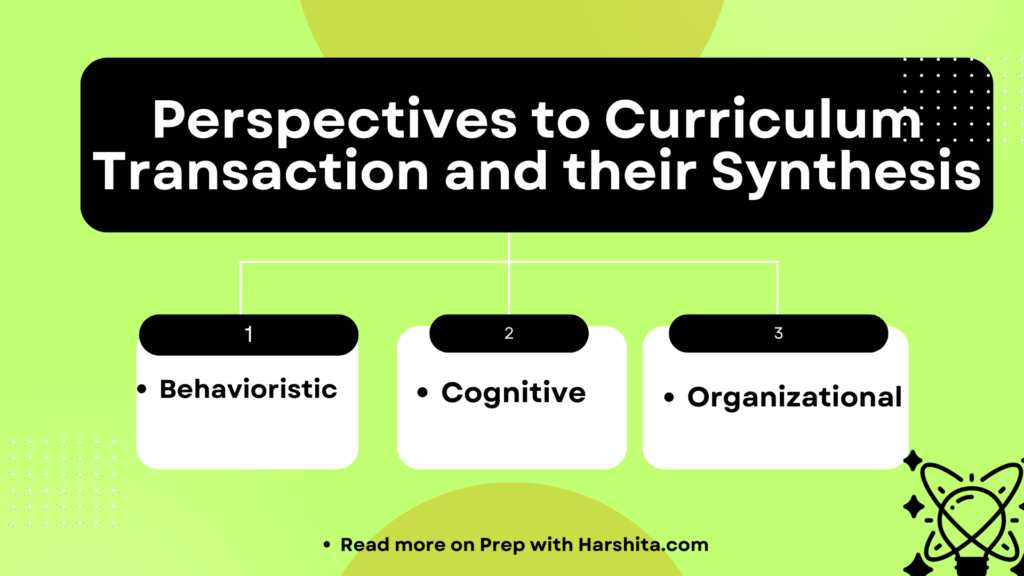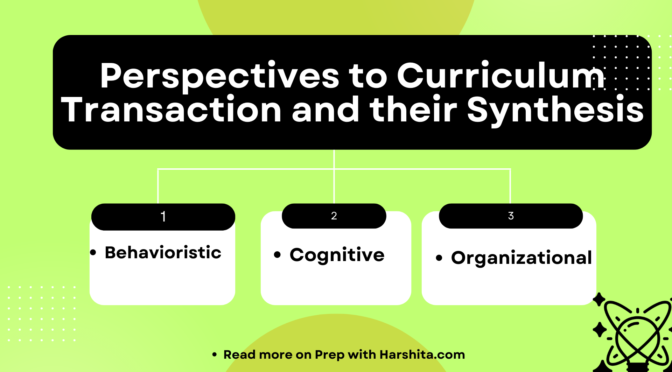The perspective of curriculum transaction refers to the process of delivering a curriculum to learners. This process can be viewed from different theoretical frameworks, including behaviouristic, cognitive, and constructivist perspectives.
Curriculum transaction is the process of delivering the curriculum to students. It is a complex process that involves the teacher, the students, the content, and the learning environment.
There are many different perspectives on curriculum transaction. Some people believe that the teacher is the most important factor in the process. They argue that the teacher’s skills, knowledge, and enthusiasm can have a major impact on student learning. Others believe that the students are the most important factor. They argue that students learn best when they are actively engaged in the learning process and when they are motivated to learn. Still, others believe that the content is the most important factor. They argue that students need to be exposed to a variety of content in order to develop their minds and to prepare for college and careers.
The best way to think about curriculum transaction is as a partnership between the teacher, the students, and the content. Each of these factors plays an important role in the learning process. When all of these factors are working together, students are more likely to learn effectively.
Behaviouristic Perspective:
The behaviouristic perspective focuses on observable behavior and reinforces learning through rewards and punishments. In this perspective, the curriculum is delivered through repetitive drills and rote memorization to achieve mastery of specific skills and knowledge. The teacher is viewed as the authority figure, and learning is primarily based on conditioning and external reinforcement.
Cognitive Perspective :
The cognitive perspective focuses on how learners process information, emphasizing the role of mental processes such as perception, memory, and reasoning. In this perspective, the curriculum is delivered through active engagement in problem-solving, critical thinking, and inquiry-based activities. The teacher is viewed as a facilitator of learning, helping learners to construct their knowledge through interaction with the environment.
Constructivist Perspective :
The constructivist perspective focuses on the active construction of knowledge by the learner, emphasizing the role of prior knowledge and experience in shaping new understanding. In this perspective, the curriculum is delivered through authentic and meaningful learning experiences that promote inquiry, reflection, and collaboration. The teacher is viewed as a guide, helping learners to construct their understanding of the world by engaging in real-world problem-solving and authentic experiences.
A synthesis of these perspectives can lead to a more holistic approach to curriculum transaction, where the curriculum is designed to accommodate different learning styles and preferences. Such an approach may incorporate both traditional teaching methods and newer, more progressive approaches that emphasize learner-centered instruction. Ultimately, the effectiveness of any approach to curriculum transaction depends on the needs and goals of learners and the context in which learning occurs.
Also Read: Approaches to Curriculum Evaluation

Also Visit: Prep with Harshita


One thought on “Perspectives to Curriculum Transaction”